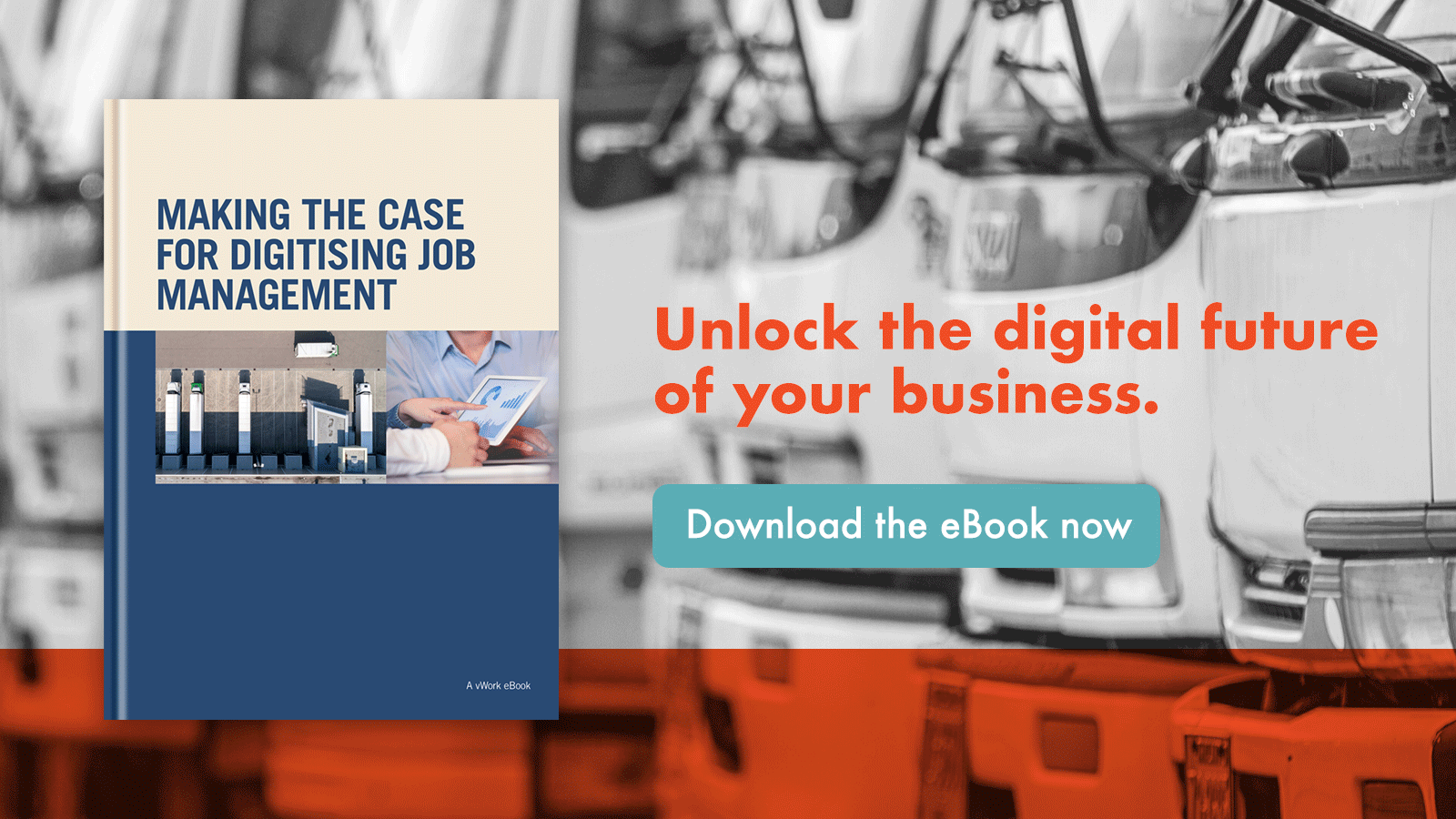Five signs that you're ready for paperless job scheduling
Digital transformation has been a buzzword in the industry for a while now, with two particular areas driving the change – a global push towards the real-time economy and customer expectations. Additionally, businesses that were once planning a transformation project in three years’ time are now accelerating starting their projects as a result of Covid-19.
Digital transformation is a big step for any large or small business to undertake, but if you want to stay on top of your game in terms of increased efficiency, attracting new customers and growing profits, it simply has to be done.
So, it’s clear to you that your journey has to start, but how do you know when it’s the right time? After talking to hundreds of transport businesses in the last 12 months, we’ve created a summary of five signs that indicate your business is ready to move beyond managing jobs on paper, excel or whiteboards and towards a paperless job scheduling platform.
- Poor efficiency
A big clue that you’re ready for digital transformation is when you start to notice inefficiencies across your business.
It could be things like when your dispatchers are regularly glued to their phones and RTs as they deal with unexpected issues - while the rest of your customers and those less urgent jobs get ignored. Or perhaps you’ve noticed that your drivers aren’t getting through as many deliveries as they should and you’re missing your DIFOT targets. Or maybe it’s that jobs that are regular gigs are being missed on the daily job sheet as you’re relying on manually scheduling them.
These are all pretty clear indicators that your business is ready for a digital transformation.
With a good job management platform in place, you’ll have access to the right data at the right time, which allows your teams to focus on what’s needed, before it’s needed, and make measured decisions rather than act in the heat of the moment.
- Increased admin and paperwork
When your team is double handling paperwork and compliance-related tasks, and clocking up hours and hours of work that’s blowing your admin budget – it’s time to think about going digital.
With a paperless job scheduling platform, you’ll have access to a number of tools like job data captured in real-time, time-stamped start and finish times for exact invoicing, price sheets for each customer and electronic proof of delivery that leaves no doubt when it occurred.
These tools mean that the majority of your paperwork will be automated and electronically captured, making it accurate, accessible, safe – and most importantly, off the end of desks!
- You’re losing customers – and not replacing them
Losing customers is not ideal, but when you’re struggling to replace them – that’s catastrophic for any business. If you’re regularly missing basics like DIFOT and your customers are starting to move towards your competition, it’s absolutely time to act.
It’s also likely that your competitors are on their own digital transformation journey (or have even completed it), and with easy access to key data, they’ll be able to act quickly and efficiently for their customers, giving them an edge over what you can provide.
By implementing a digital job management platform, you’re effectively future-proofing your business as you’re able to identify ‘best value’ components for yourself and your customers and deliver them in a structured and timely manner.
- Increased customer expectations
Customers no longer just expect great service, they demand it. With digital transformation happening in every single industry, customers have become used to a level of service that they want to seamlessly occur in all aspects of their lives.
Thanks to tech solutions like Alexa that will turn down your favorite music for you on request so that you can watch an on-demand movie selected from a range that Netflix suggested, while waiting for your Uber Eats that’s only five minutes away, we’re accustomed to service that keeps us informed and that’s personalized and efficient.
Customers simply expect that they’ll receive prompt communication such as email confirmations and text updates, and have access to self-booking tools that they can use at their own convenience – and if you don’t have these tools for them, they’ll find a provider that does.
- Your other business software is ready and able to be integrated
Implementing new systems has a reputation of being complex, but as nearly all industries work towards a digital transformation, this complexity is being removed.
Many accounting packages, CRMs and telematics providers now come with great APIs that allow for the seamless transition of business data between backbone business tools. And when providers build their API with a low-code framework in mind, it’s even easier (and quicker) to integrate what you need. So, if your other software tools work well together, there is a stronger case to migrate your entire process towards a paperless job scheduling platform.
If you’re recognising any of the above scenarios in your own business, it’s definitely time to start that digital transformation journey. We’ve put together a great resource that you can download here that outlines in more detail the importance of harnessing your data and using your exception management to delight your customers.
Share this
You May Also Like
These Related Stories

Five reasons why your customers will thank you for digitising your job management

Five advantages of integrating your accounting package with your job scheduling software


